The article delves into mastering Facebook travel advertising through seven essential steps designed to optimize campaigns for the hospitality industry. It articulates crucial strategies, including:
Each strategy is supported by practical examples and actionable insights, enhancing the overall effectiveness of the campaigns.
In an increasingly digital world, the hospitality industry is turning to social media platforms like Facebook to capture the attention of potential travelers. This guide outlines essential steps to master Facebook travel advertising, enabling businesses to effectively connect with their target audience through compelling visuals and strategic messaging.
However, with so many options available, how can advertisers ensure their campaigns not only reach but resonate with prospective customers? Exploring the nuances of Facebook's advertising features and best practices can unlock the potential to drive engagement and boost bookings in a competitive landscape.
Social media advertising serves as a powerful tool for companies in the hospitality industry, enabling them to connect with prospective tourists through targeted promotions on platforms like Instagram. These advertisements not only showcase stunning locations, lodgings, and vacation packages but also do so in a visually captivating manner. Key features, such as dynamic ads, automatically display relevant offers tailored to users' interests and behaviors, enhancing engagement. By grasping these foundational elements, you will be well-equipped to navigate the platform effectively, setting the stage for successful campaigns that resonate with your audience.
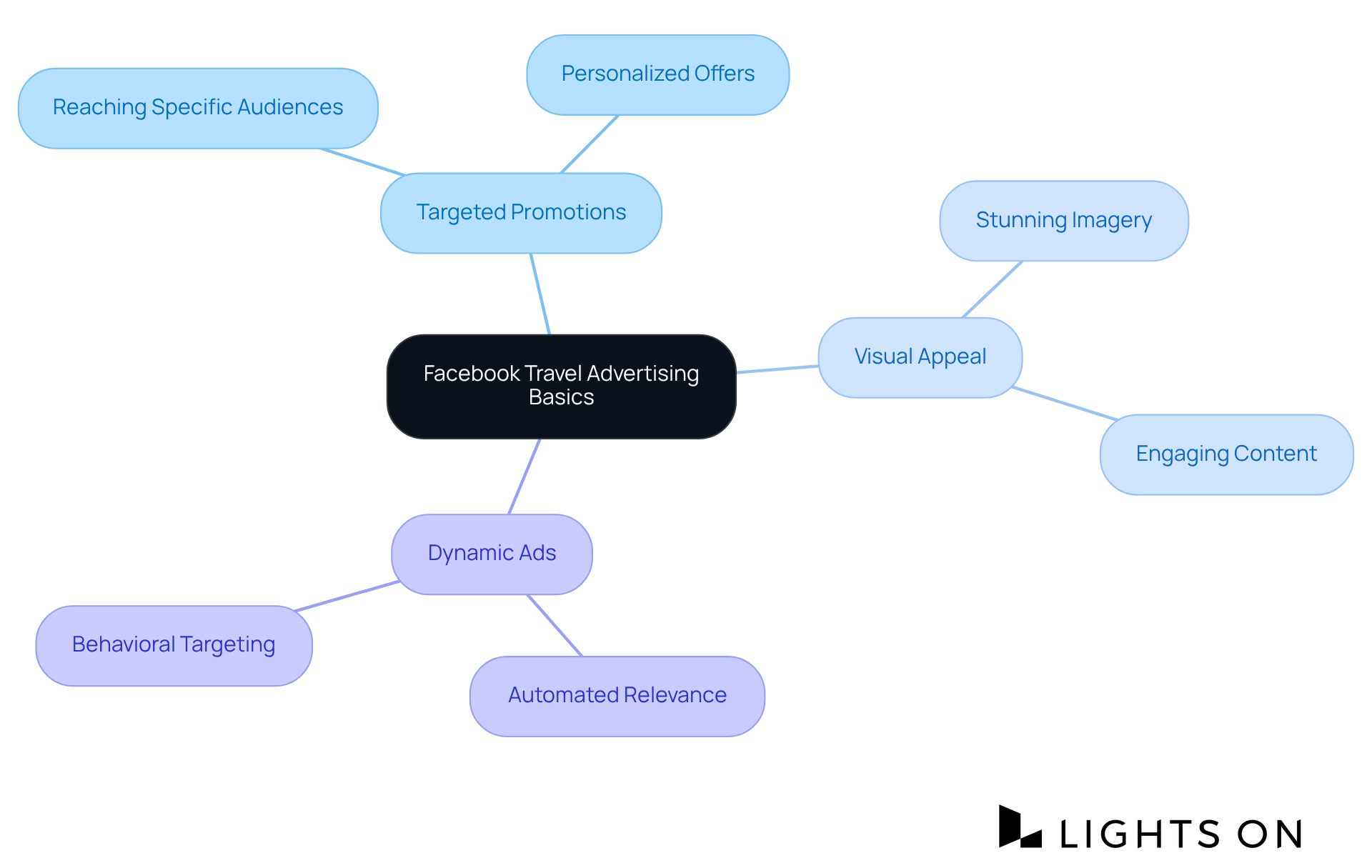
Before launching your campaign, it is essential to define what you want to achieve. Common objectives for Facebook travel advertising include:
To formulate your objectives effectively, employ the SMART criteria—Specific, Measurable, Achievable, Relevant, and Time-bound. For instance, rather than stating 'increase bookings,' specify 'increase bookings by 20% over the next three months.' This level of clarity will not only guide your ad creation but also refine your targeting strategies.
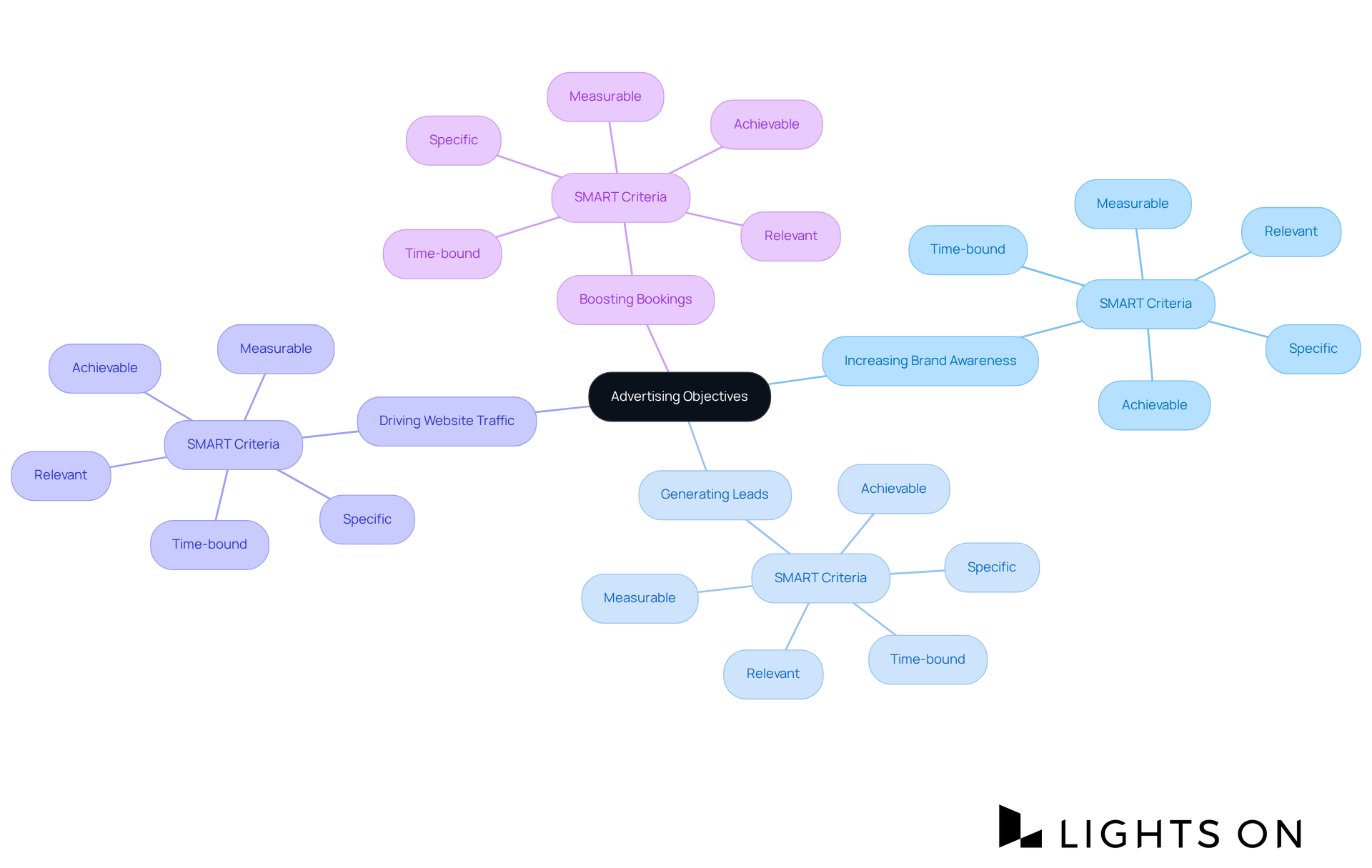
Leverage the Audience Insights tool on the platform to collect essential data regarding the demographics, interests, and behaviors of potential travelers. Take into account critical factors such as age, location, travel preferences, and historical travel behaviors. By creating audience segments rooted in these insights—such as 'adventure travelers aged 25-35' or 'families planning summer vacations'—you will significantly enhance the relevance of your advertisements and improve engagement rates.
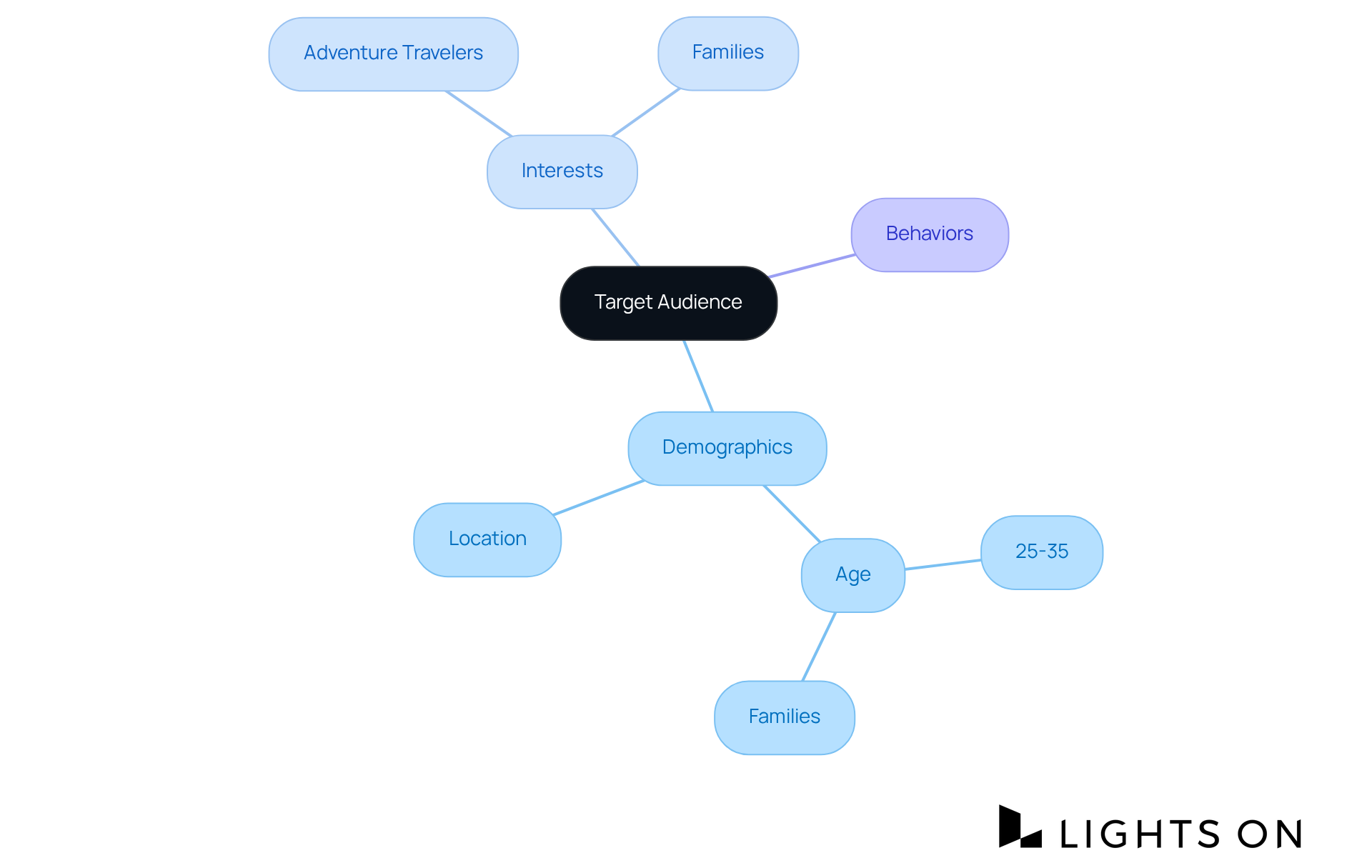
Creating engaging advertisement text and images is essential for successful hotel promotion on social media. Start by crafting visually appealing ads that highlight stunning images or videos of your destinations. Employ compelling ad copy that resonates with your audience's desires and pain points. For instance, rather than merely stating 'Book your stay now,' consider saying, 'Escape to paradise and enjoy a complimentary breakfast with your stay!' This strategy not only informs but also entices potential customers to take action.
Furthermore, incorporate strategies such as:
to enhance engagement and drive bookings.
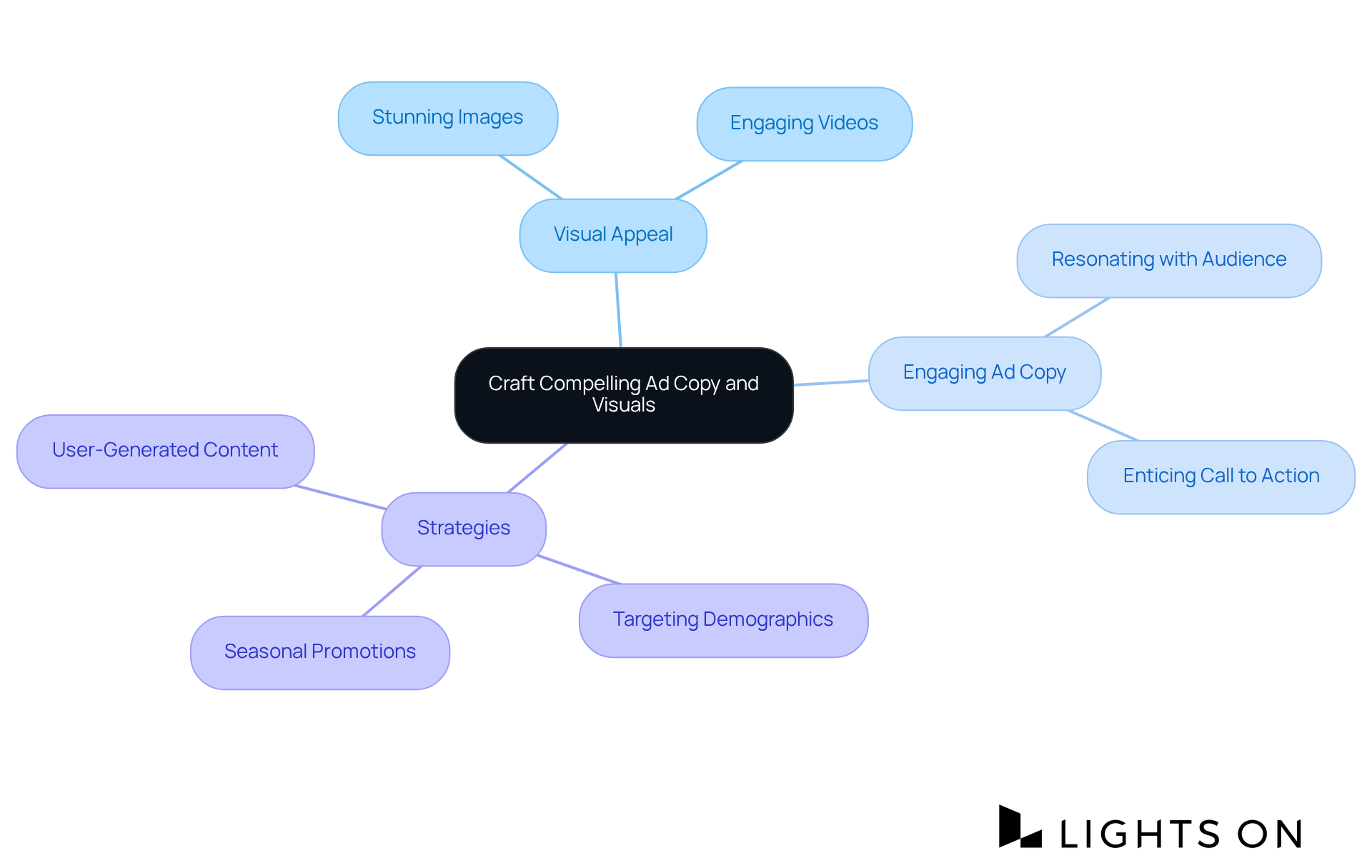
The platform offers a diverse array of ad formats, including image ads, video ads, carousel ads, and collection ads. Selecting the formats that most effectively showcase your offerings is crucial.
For example, carousel ads in Facebook travel advertising enable the display of multiple images or videos within a single ad, making them ideal for highlighting various aspects of a travel package.
Furthermore, to elevate the effectiveness of your Facebook travel advertising, it is essential to integrate hotel-specific marketing strategies. This may include:
Additionally, a thorough understanding of your audience's preferences and the content types that resonate with them will empower you to choose the most effective ad formats.
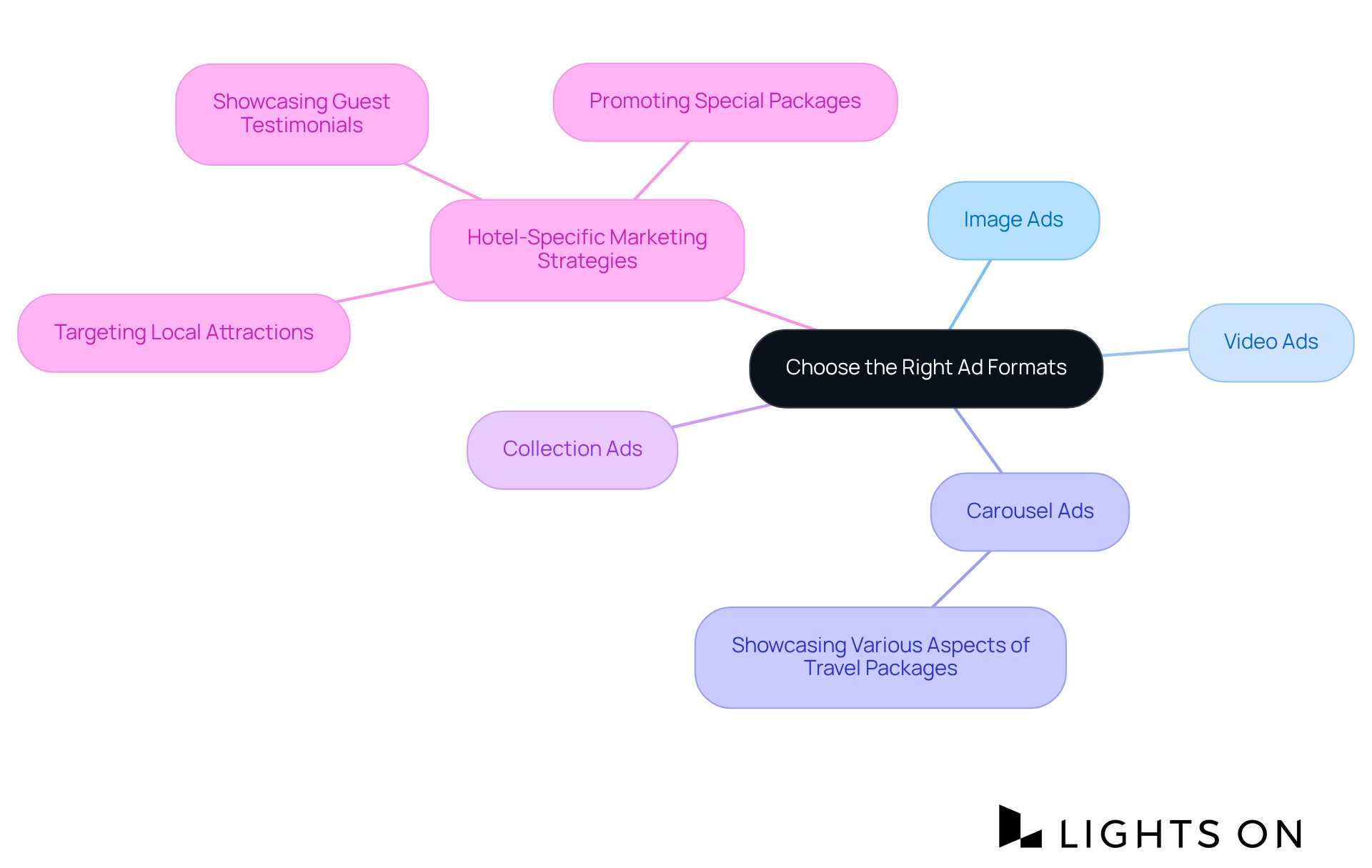
Harness the power of Facebook's advanced targeting features to elevate your marketing strategy. Custom Audiences enable you to retarget users who have previously engaged with your brand, ensuring that your message reaches those already familiar with your offerings. In contrast, Lookalike Audiences allow you to connect with new users who share similarities with your existing customers, expanding your reach effectively.
Furthermore, consider implementing behavioral targeting in your Facebook travel advertising to engage users based on their travel-related activities, such as recent searches or interactions with travel content. This strategic approach not only enhances your marketing efforts but also positions your brand to meet the evolving needs of your audience.
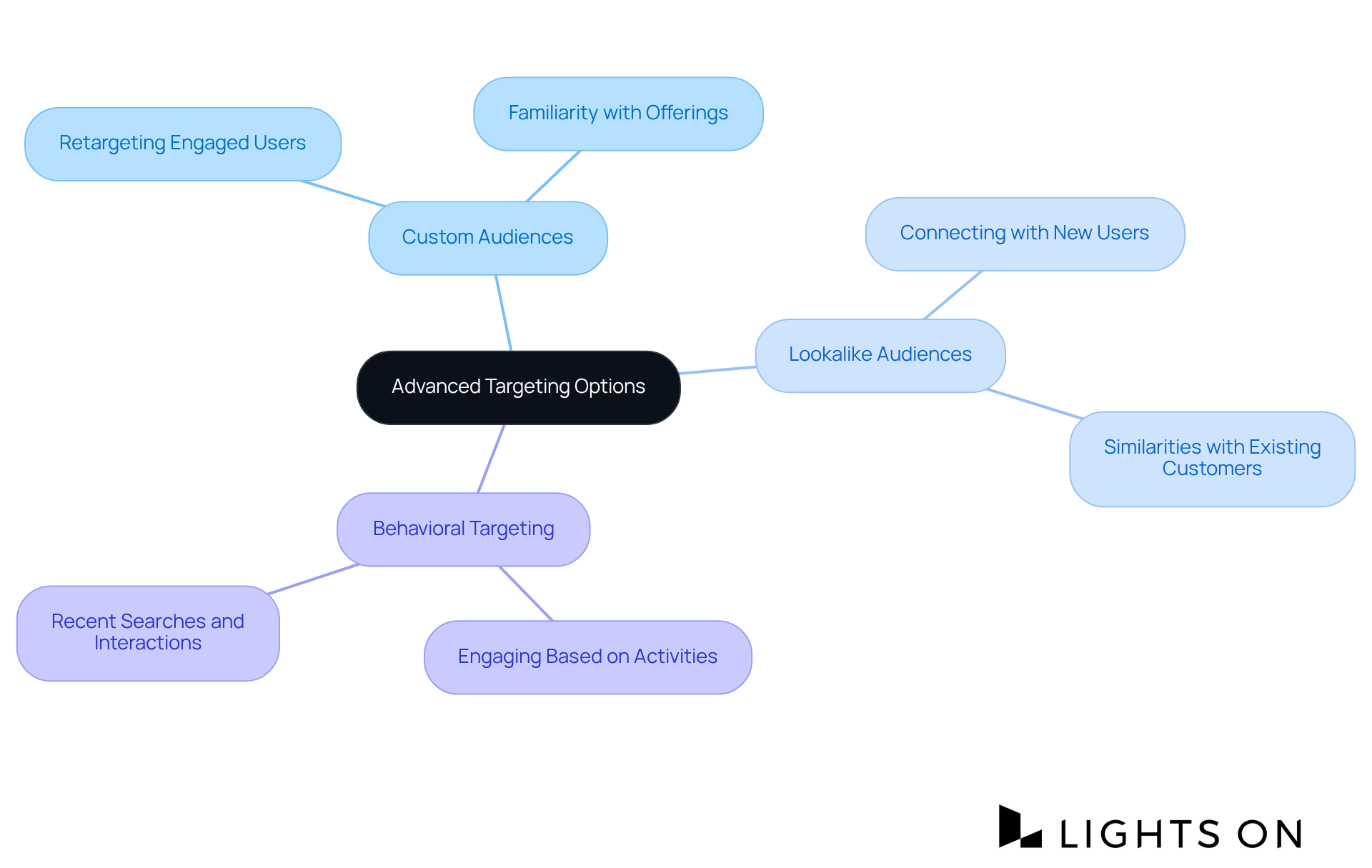
Establish your advertising budget in alignment with your comprehensive marketing plan and objectives, specifically tailored for the hotel sector. Begin with a daily budget that facilitates adequate data collection, typically ranging from $5 to $20 per day, ensuring you can gather actionable insights.
Utilize Facebook Travel Advertising with Ads Manager to track key performance indicators (KPIs) such as:
Furthermore, consistently evaluate these metrics to assess campaign effectiveness and implement necessary adjustments to enhance outcomes, focusing on strategies that directly contribute to increasing bookings.
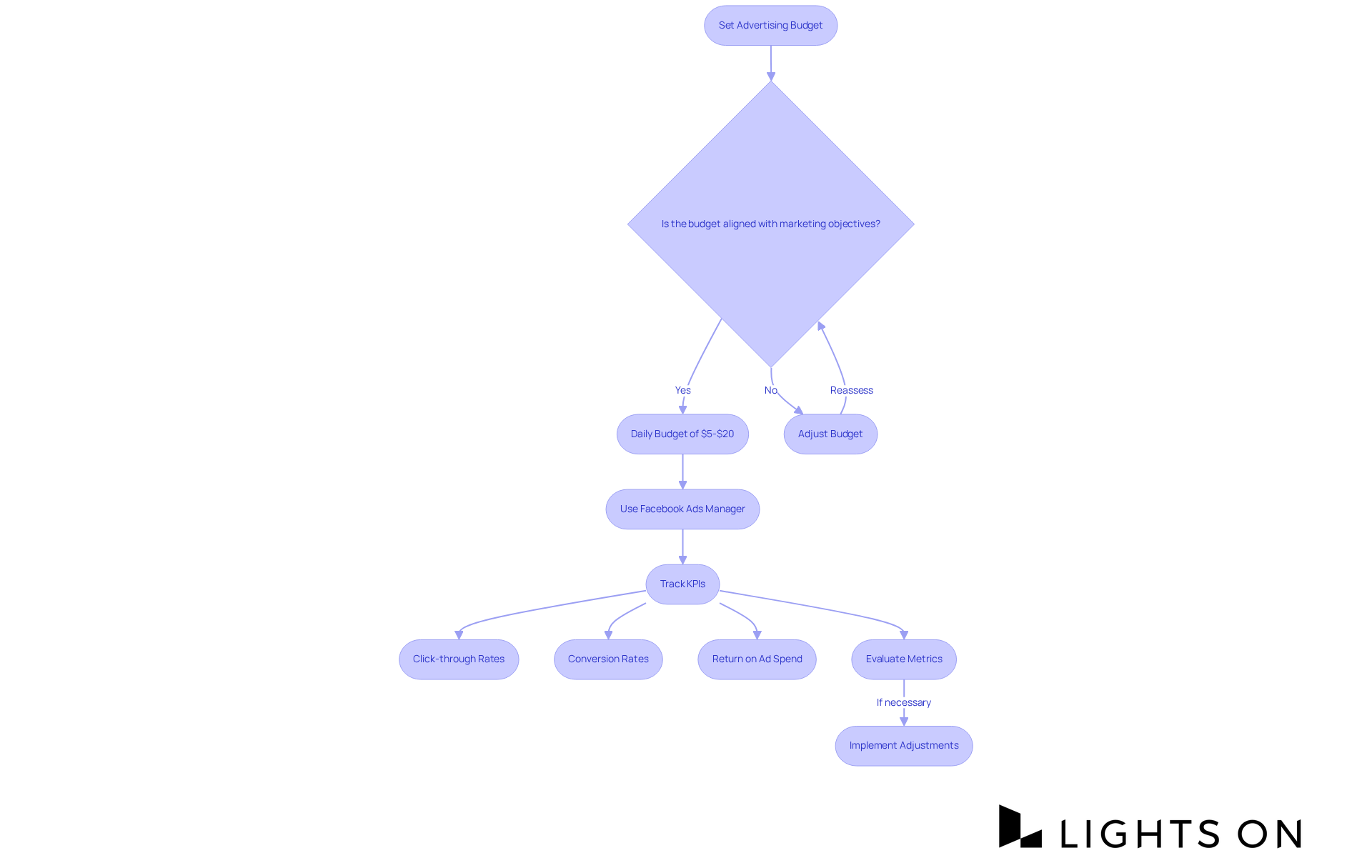
Implement A/B testing to compare different versions of your ads, such as varying headlines, images, or calls to action. This process not only helps identify which elements resonate most with your audience but also serves as a critical tool for optimizing your marketing efforts.
Furthermore, by utilizing retargeting strategies, you can effectively reach users who have previously engaged with your ads or visited your website. By reminding them of your offerings, you significantly increase the likelihood of conversions, thereby enhancing overall campaign effectiveness.

Mastering Facebook travel advertising requires a strategic approach that integrates a deep understanding of the platform's features, the establishment of clear objectives, and effective engagement with target audiences. Leveraging Facebook's unique capabilities enables businesses in the travel industry to craft visually appealing and compelling advertisements that resonate with potential travelers. The journey to successful advertising commences with a solid foundation, ensuring that each campaign is meticulously tailored to meet specific goals and connect with the right audience.
This guide outlines key steps, emphasizing the significance of:
Each of these elements enhances campaign effectiveness, ultimately driving bookings and elevating brand awareness in a competitive market.
As the landscape of travel advertising evolves, embracing these strategies empowers businesses to not only reach their desired audience but also adapt to shifting consumer behaviors. By continually optimizing campaigns through A/B testing and retargeting, travel brands can maximize their impact on Facebook, ensuring that their advertising efforts yield tangible results. The importance of mastering these steps is paramount; they are essential for any travel business aiming to thrive in today's digital marketplace.
What is Facebook travel advertising?
Facebook travel advertising is a method used by companies in the hospitality industry to connect with potential tourists through targeted promotions on social media platforms like Facebook and Instagram. It showcases locations, lodgings, and vacation packages in a visually appealing way.
What are the key features of Facebook travel advertising?
Key features include dynamic ads that automatically display relevant offers based on users' interests and behaviors, which enhances engagement with the audience.
Why is it important to define advertising objectives before launching a campaign?
Defining advertising objectives is crucial as it helps clarify what you want to achieve, guiding the creation of ads and refining targeting strategies for better outcomes.
What are common objectives for Facebook travel advertising?
Common objectives include increasing brand awareness, generating leads, driving website traffic, and boosting bookings.
What is the SMART criteria for formulating advertising objectives?
The SMART criteria stand for Specific, Measurable, Achievable, Relevant, and Time-bound. This framework helps in setting clear and actionable objectives, such as specifying a goal to 'increase bookings by 20% over the next three months.
Transform your group booking strategies with Lights On and watch your occupancy soar.